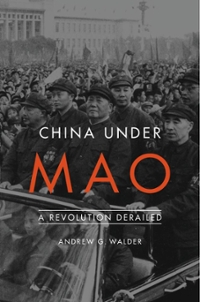3. The market illustrated below has Inverse demand p(Q) = 130 - 30 and industry wide marginal cost MC(Q) = 10 + 2Q. If production is competitive, this is the market (inverse) supply curve. If production is consolidated under a monopolist, this is the monopolist's MC curve. a. Suppose there is a monopolist. Explain how marginal revenue for a monopolist is different than for a firm under perfect competition. Then derive the profit-maximizing market outcome (including the monopoly price and quantity @. and P.)- b. Now suppose the market operates under perfect competition, but with a per unit taxt = $30. Determine the market equilibrium and illustrate on a diagram. As a follow-up, determine the relationship Q (t) that gives the equilibrium market quantity as a function of the tax rate. c. If you invert the relationship from part (b), you have T(Q), the tax the government would need to set if it wishes the market quantity to be Q. Then total tax revenue is T(Q) = (Q) . Q. [This may be useful for the intuition that's requested below.I Determine whether total welfare in this market is higher (i) under a monopoly, or (fi) under perfect competition with an "empire-building" government that maximizes total tax revenue T'(Q). For (il), make the usual assumption that tax revenue is spent on something useful (le.. not wasted). Illustrate both cases on a single diagram, Do your best to explain why your comparison turns out as it does. [Applying intuition about the components of marginal revenue MR(Q) to the "marginal tax revenue" 7"(Q) might be helpful.] P P(Q) = 130 - 30 MC(Q) = 10 + 2Q (s(p) = 4p -5)e. In what range must the international relative price of wheat fall? Why? 7. Suppose that: In Malaysia the unit labor requirement (ULR) to produce a pound of rice and a pencil are 2 and 4 hours of labor respectively; In Indonesia, the unit labor requirement to produce a pound of rice and a pencil are 4 and 6 hours respectively; each country has 20,000 hours of labor to allocate between the production of rice and pencils; and in autarky, Malaysia consumes 5,000 pounds of rice and 2,500 pencils. When trade PRW occurs, the world relative price of rice Pew becomes 3/5- a. Given that the marginal product of labor is the inverse of unit labor requirements, i.e. MPL = 1/ULR, derive the relationship between price ratio and the ratio of unit labor requirements. (hint: remember that w = P * MPL and that in autarky wages in both sectors are equal) b. Which country has the better technology? c. What are the autarkie (pre-trade) relative prices of rice and pencils respectively in each country? d. How many work hours are employed in the Pencil and Rice sector respectively in Malaysia? e. In which product will each country specialize? f. When specializing, how many units of rice and pencils will Malaysia produce? (hint: obtain total labor hours available from your answer in part d. above) Chapter 3: Specific Factors Model 8. How does the specific factors model differ from the Ricardian model? (list at least 3 for full points) 9. Suppose that land is specific to agriculture, capital is specific to manufacturing, and labor is mobile between sectors. If there is an increase in the amount of capital, holding the prices of agricultural and manufacturing goods constant, what happens to the equilibrium nominal wage rate and labor allocation? What happens to the rental rate of capital? What happens to the rental rate of land? 10. Suppose that land is specific to corn, capital is specific to automobiles, labor is mobile between sectors, and payments are as follows: Automobiles: Sales revenue = 400; payments to labor = 100; payments to capital = 300 Corn: Sales revenue = 300; payments to labor = 250; payments to land = 50 Holding the price of automobiles constant, suppose the increase in the price of corn is 10% and the increase in the wage is 5%. What is the impact of this on the rental of land and the rental of capital? Thought exercise: Question generation (This is due on Sunday, the gth of February, 2020 at 11:59PM) 11. Choose any topic above and construct an original multiple choice question (complete with question, at least 4 responses and the correct answer). In addition, provide the logic for what the question was designed to test.the equations for the foreign economy to solve for Y" as a function of Y and substitute this solution for Y* in part (a).] What is the multiplier for each country now? Why is it different from the open economy multiplier in part (a)? C. Assume that the domestic government, G, has a target level of output of 125. Assuming that the foreign government does not change G' , what is the increase in G necessary to achieve the target output in the domestic economy? Solve for net exports and the budget deficit in each country. d. Suppose each government has a target level of output of 125 and that each government increases government spending by the same amount. What is the common in- crease in G and G necessary to achieve the target output in both countries? Solve for net exports and the budget deficit in each country. e. Why is fiscal coordination, such as the common increase in G and G' in part (d), difficult to achieve in practice









